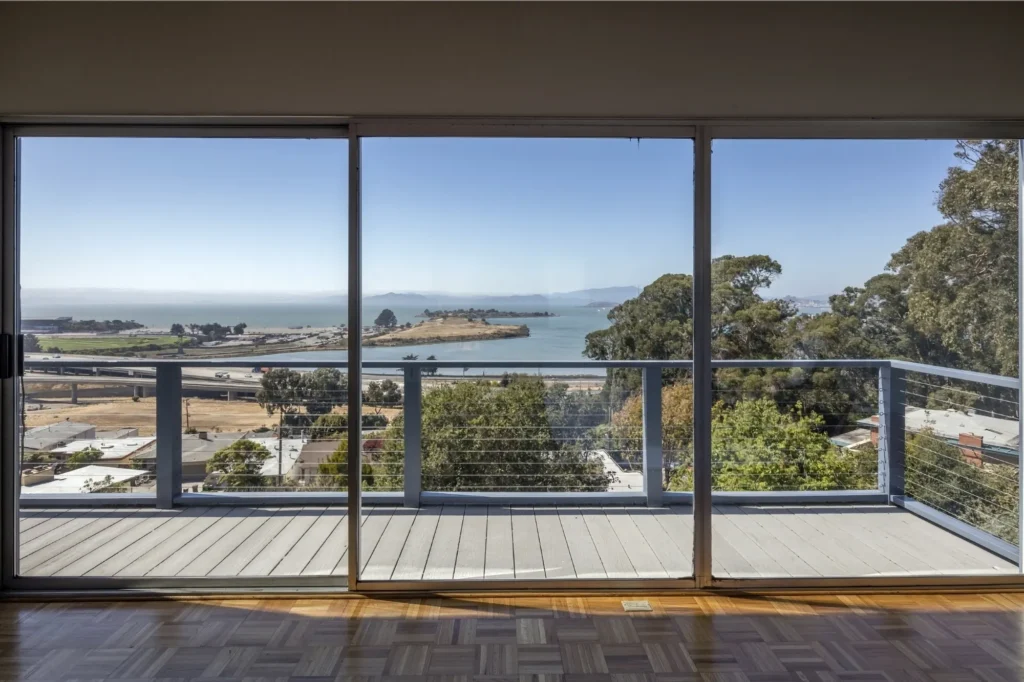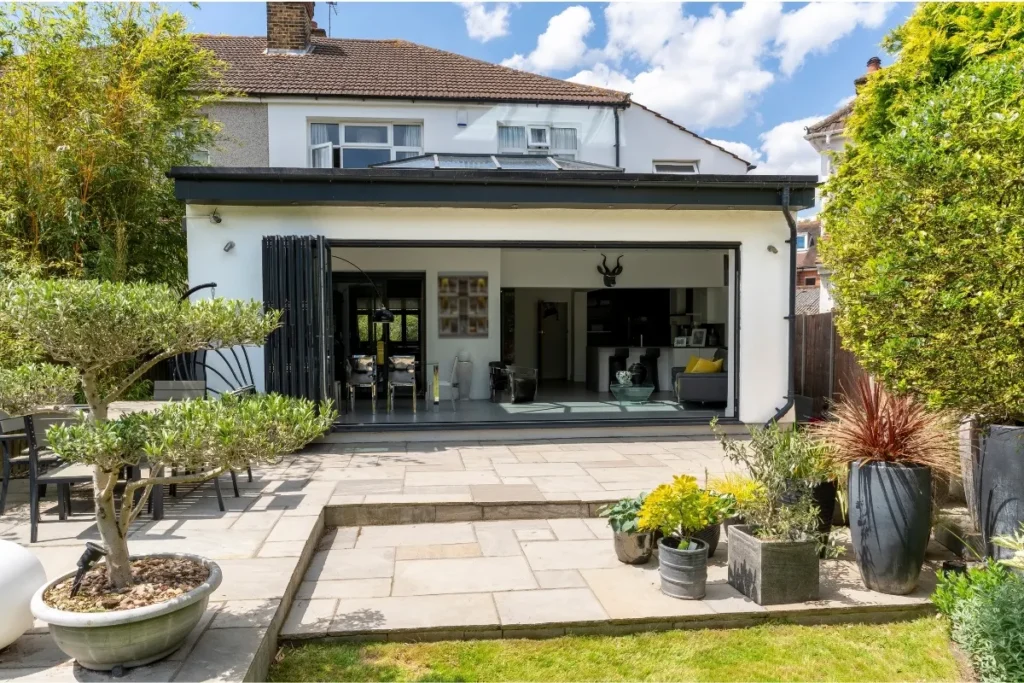
When planning a home renovation, selecting the right patio doors can transform your living space dramatically. The perfect doors not only enhance natural light and improve access to outdoor areas but also boost your property's value and aesthetic appeal. With several options available—bifold, French, and sliding doors—making an informed choice requires understanding each type's unique characteristics, advantages, and potential limitations.
When considering new patio doors, three primary styles dominate the market: bifold, French, and sliding doors. Each offers distinctive benefits and suits different architectural styles and practical needs.
Bifold doors feature multiple panels that fold concertina-style, creating a wide opening that connects indoor and outdoor spaces. With their classic hinged design, French doors swing open from the centre to provide an elegant transition between rooms or exterior areas. Sliding doors, meanwhile, operate on tracks with at least one movable panel that glides horizontally past fixed sections.
Your choice should reflect not only aesthetic preferences but also practical considerations such as available space, desired opening width, and how frequently you'll use the doors. Let's examine each option in greater detail to determine which might be the perfect fit for your home renovation project.
Bifold doors represent a contemporary solution for homeowners seeking to maximise their opening space. These innovative doors consist of multiple glass panels connected by hinges, allowing them to fold neatly against one another when opened. The concertina-style operation enables you to create expansive openings, sometimes spanning entire walls, dramatically enhancing the connection between indoor and outdoor environments.
The tracking system installed along the top and bottom of the frame guides the panels smoothly as they fold, ensuring effortless operation despite their substantial size. Most bifold configurations include a 'master door' that functions as a standard hinged door for everyday access, eliminating the need to fold all panels for casual entry and exit.
The most compelling benefit of bifold doors lies in their ability to create exceptionally wide openings—far greater than what's possible with sliding or French door alternatives. This feature makes them particularly attractive for entertaining, as they can effectively remove the barrier between your home and garden, creating a unified space for guests to enjoy.
Modern bifold systems boast impressive thermal efficiency, with high-quality double or triple glazing and robust seals that maintain comfortable indoor temperatures year-round. The substantial glass panels also maximise natural light penetration, potentially reducing energy costs associated with artificial lighting and heating.
While bifold doors offer remarkable benefits, they require sufficient clearance space for the folded panels when open. This spatial requirement might limit furniture placement options in rooms where space is at a premium. Additionally, the multiple vertical frames necessary for the folding mechanism create more visible lines than sliding doors when closed, which might affect your unobstructed view of the outdoors.
Quality varies significantly between manufacturers. Bifold Doors by Future Products offer slimmer frames, smoother operation, and better weather resistance than budget alternatives. The initial investment tends to be higher than for French doors, though comparable to high-end sliding systems, making them a significant consideration in your renovation budget.

French doors have graced homes for centuries, bringing classical elegance to both period properties and contemporary dwellings. Typically comprising two hinged doors that open outward or inward from a central meeting point, they create a symmetrical, balanced appearance that complements various architectural styles.
The traditional design features multiple glass panes separated by muntins (vertical and horizontal dividers), though modern versions often incorporate single large glass panels for a cleaner look while maintaining the characteristic central opening. Available in various materials, including engineered timber, aluminium, and uPVC, French doors can be customised to match your home's existing aesthetic.
French doors offer exceptional versatility, working beautifully in both traditional and contemporary settings. Their hinged design allows for a complete opening of the doorway, providing excellent ventilation and a generous access point between spaces. When fully opened, they create an inviting transition that feels more deliberate and formal than other door styles.
From a practical perspective, French doors typically represent the most economical option among the three styles discussed. Their straightforward construction and widespread availability contribute to competitive pricing, making them an attractive choice for budget-conscious renovations without compromising style or functionality.
The primary limitation of French doors concerns their opening width, which is restricted by the size of the doorway they occupy. Unlike bi-fold or sliding systems that can span much wider apertures, French doors are generally limited to standard door widths, typically between 1.2 and 1.8 metres in total.
Space requirements present another consideration, as the swinging action necessitates clearance both inside and outside the home. This might restrict furniture placement or prove impractical for patios with limited depth. In high-traffic areas, the swinging doors might also create obstacles compared to sliding alternatives that remain within their tracks.
Sliding doors epitomise modern architectural aesthetics with their clean lines and minimalist profiles. These doors feature large glass panels moving horizontally along tracks, with at least one fixed panel and one sliding section. The design emphasises maximum glass area with minimal framing, creating unobstructed views and abundant natural light.
Advanced engineering allows for impressively large glass panels—sometimes up to three metres wide per section—with remarkably slim frames. This creates a nearly seamless visual connection to the outdoors when closed, making sliding doors particularly popular in contemporary homes where the boundary between interior and exterior spaces is deliberately blurred.
The most distinctive benefit of sliding doors is their space efficiency. Since the panels slide parallel to the wall rather than swinging outward, they require no clearance space on either side, making them ideal for rooms with limited floor area or for patios where furniture placement might otherwise be restricted.
Modern sliding door systems feature exceptionally slim sightlines compared to bifold alternatives, maximising views and light transmission. The large, uninterrupted glass panels create a striking architectural feature that enhances both interior and exterior aesthetics. Additionally, high-quality systems offer smooth, effortless operation despite the substantial weight of the glass panels.
While sliding doors offer impressive views, their opening capacity is inherently limited. Even in multi-panel configurations, the maximum opening typically reaches only 50-65% of the total width, as the sliding panels must overlap with fixed sections. This restriction might disappoint homeowners seeking the wide-open feel that bifold doors can provide.
Quality variations significantly impact performance, with premium systems offering better sealing, smoother operation, and enhanced security features. Budget options might suffer from operational issues over time, particularly in coastal or exposed locations where environmental factors can affect the tracking mechanisms.
Consider how you'll primarily use the space when selecting between bifold, French, and sliding doors. Bifold doors offer unmatched opening width for frequent entertaining and seamless indoor-outdoor flow. For traditional aesthetics and straightforward functionality, French doors provide timeless appeal. For maximising views with minimal frame intrusion, sliding doors excel.
comments